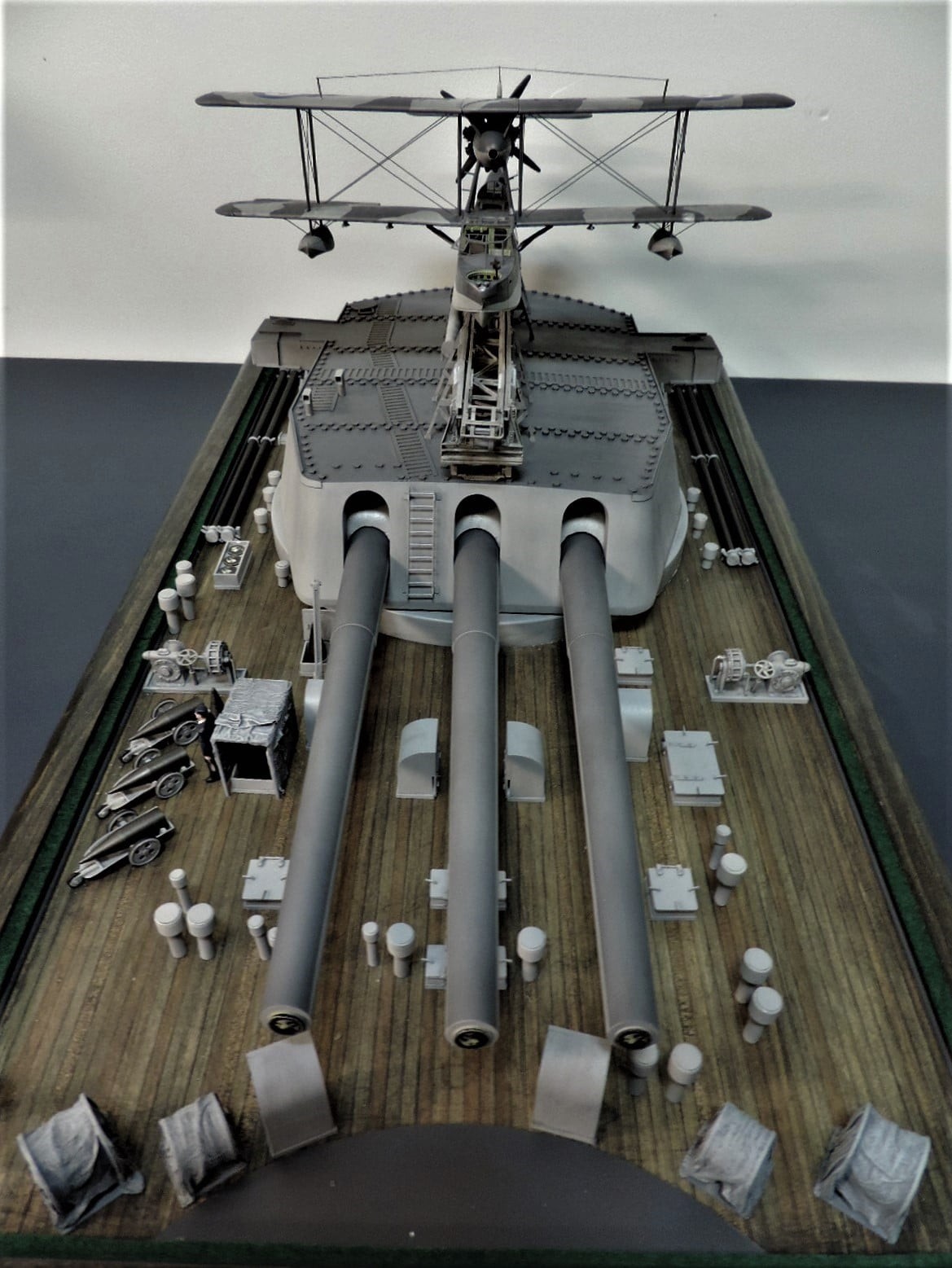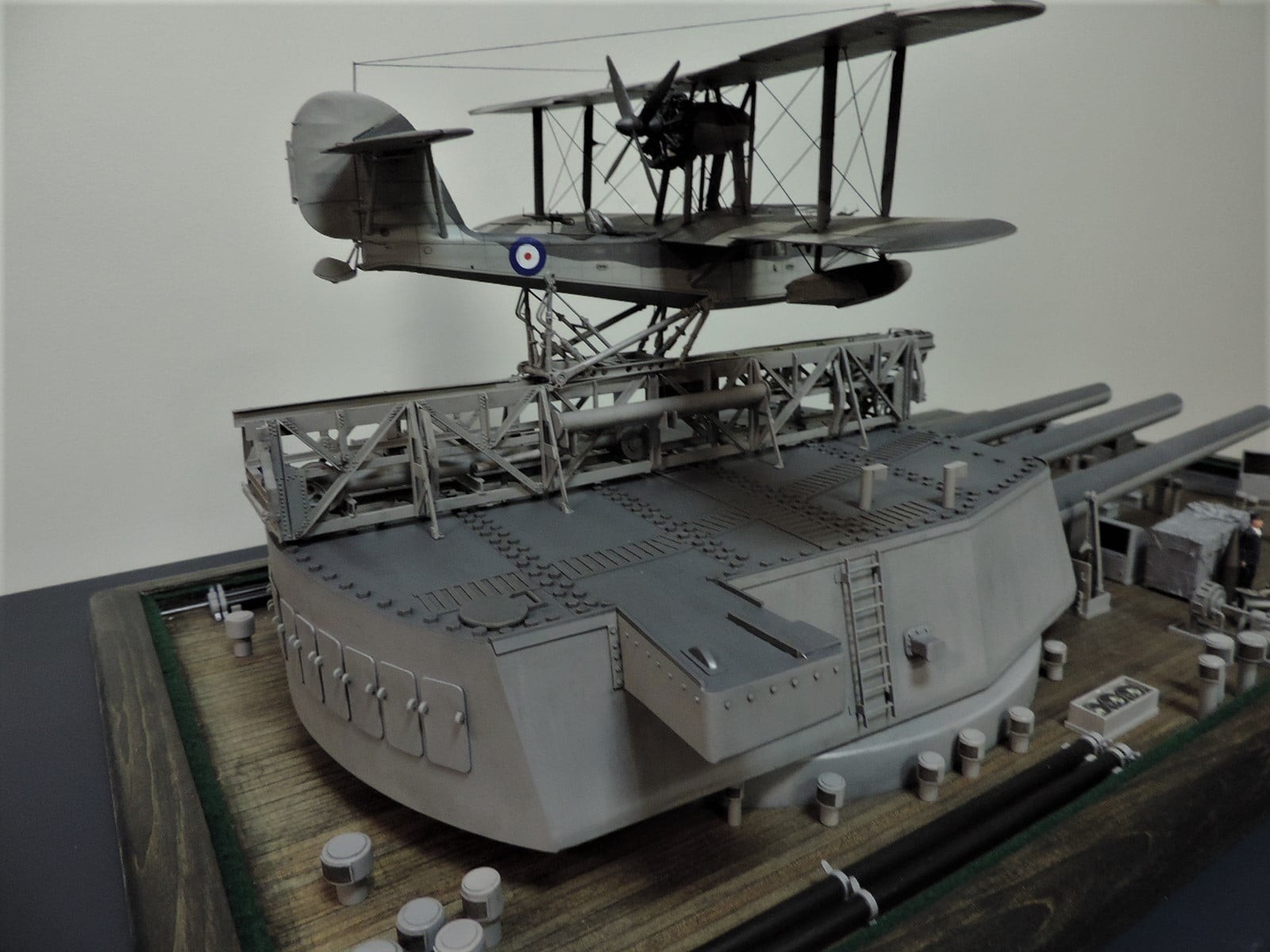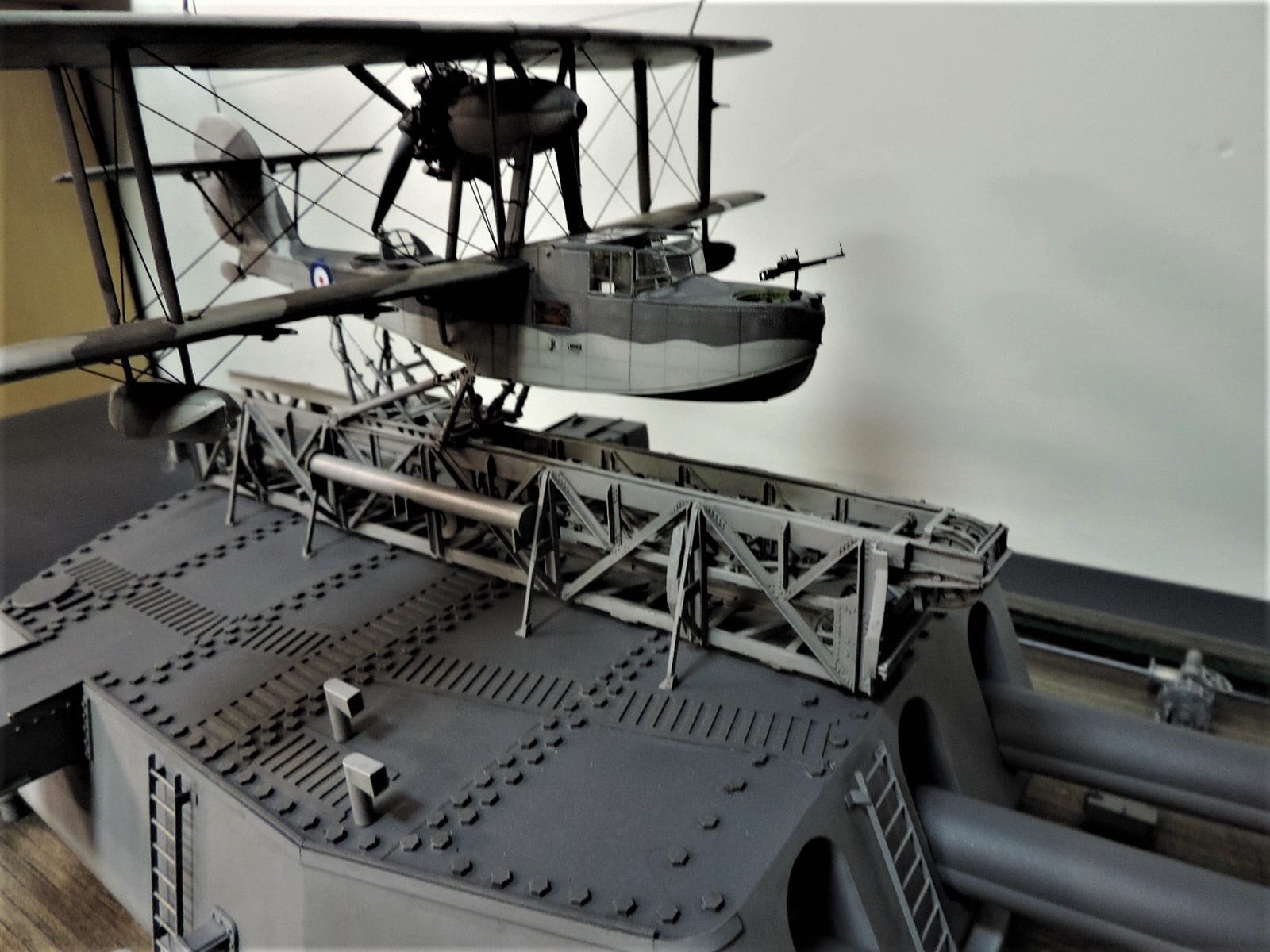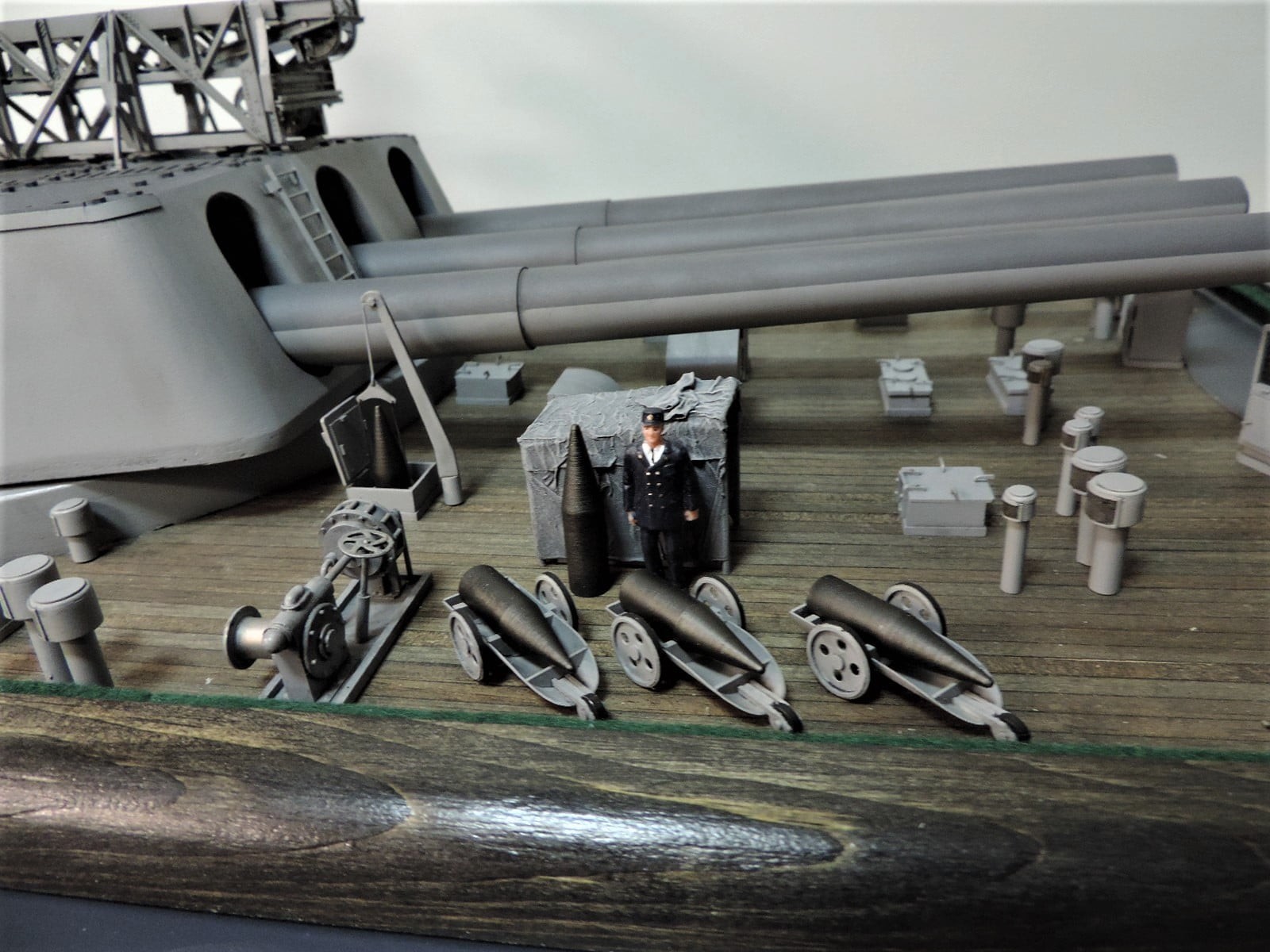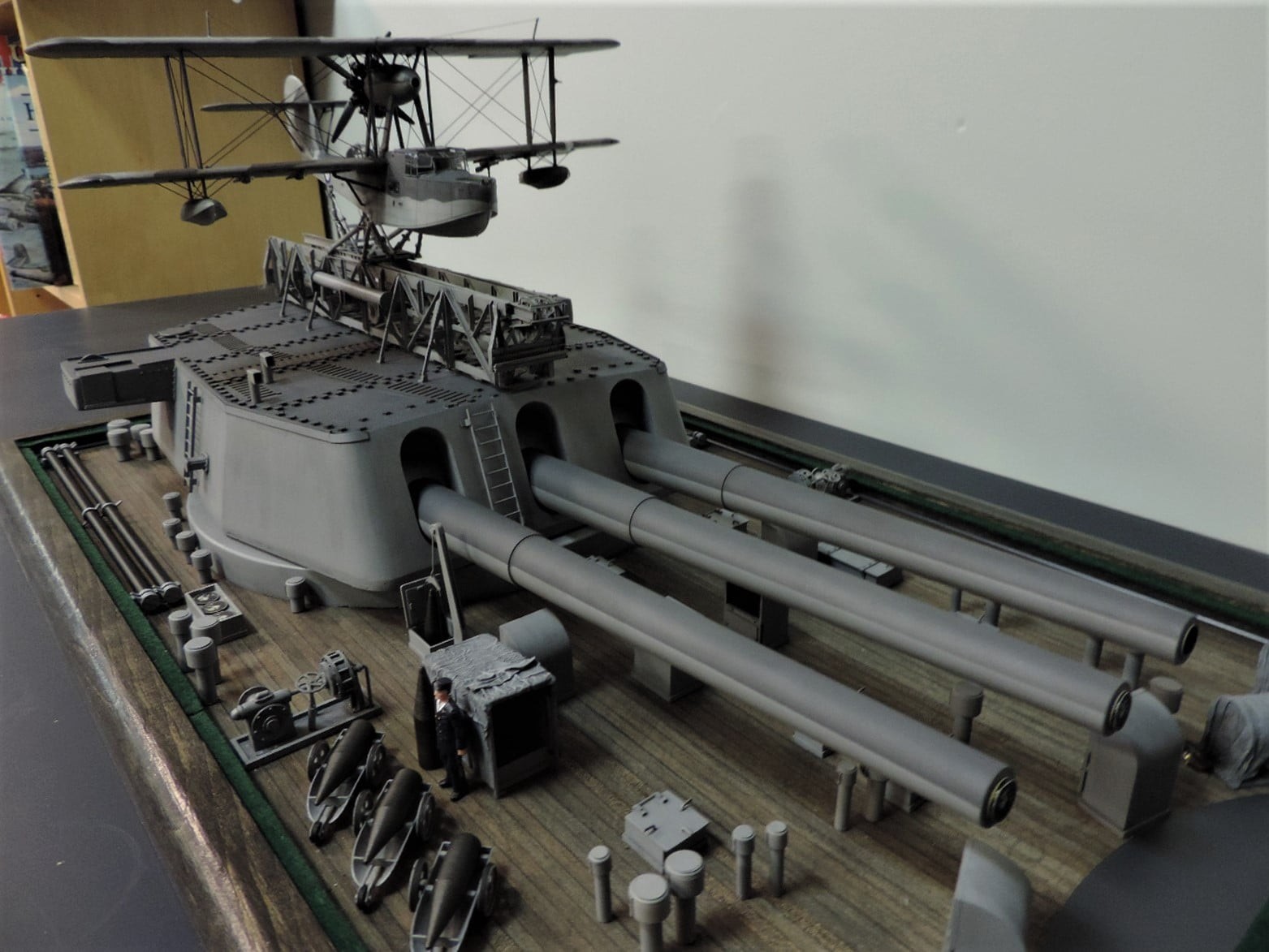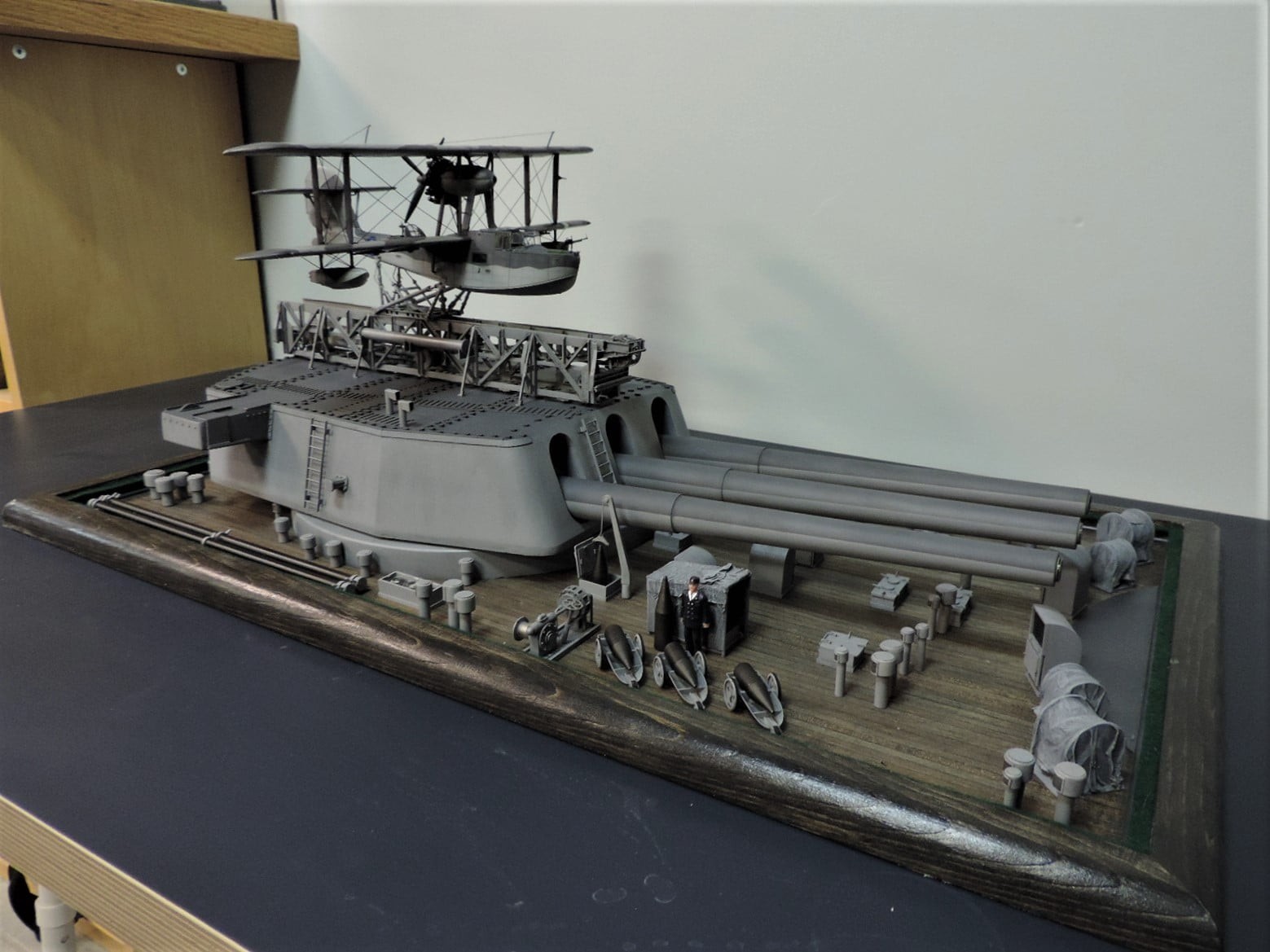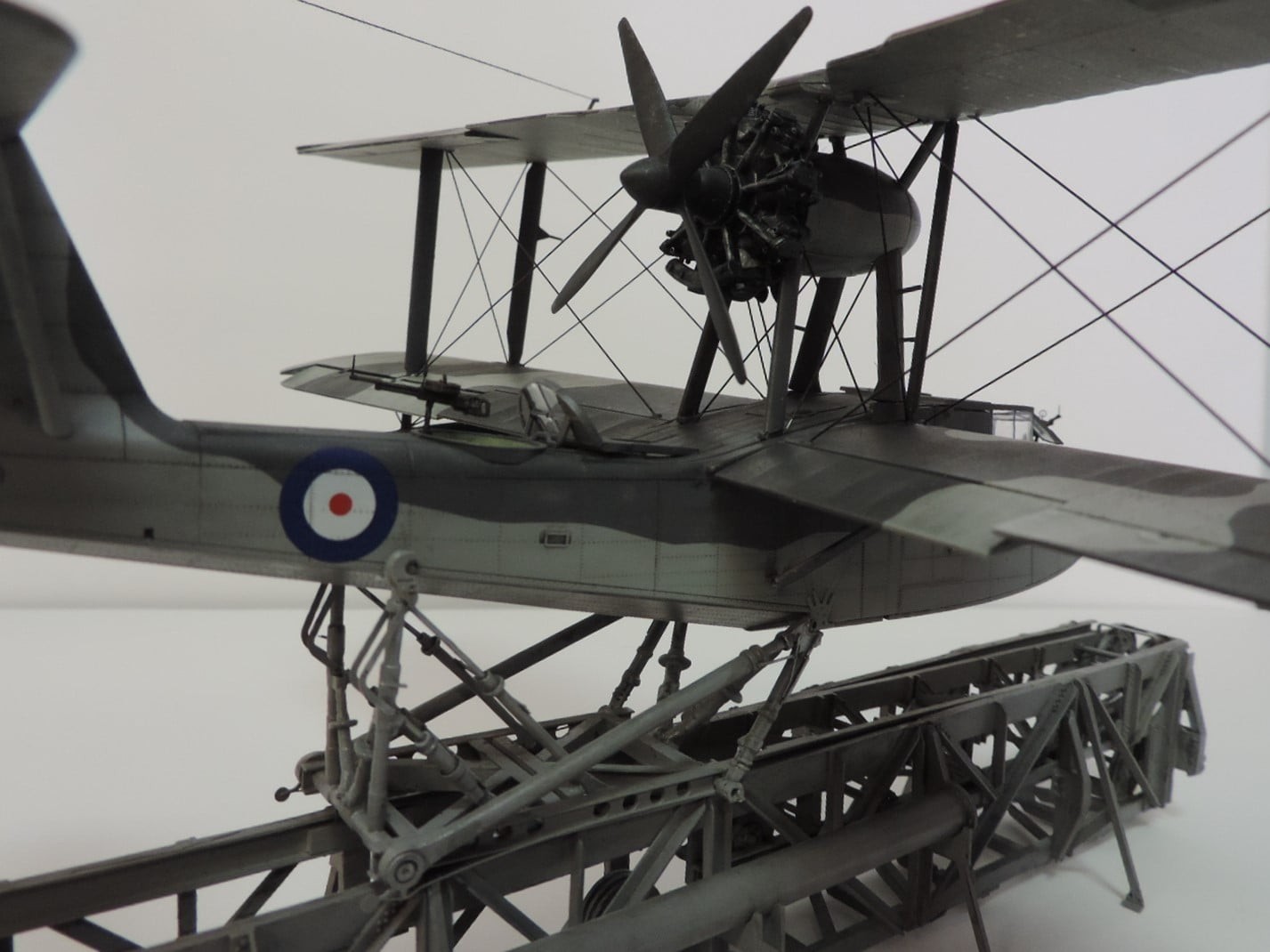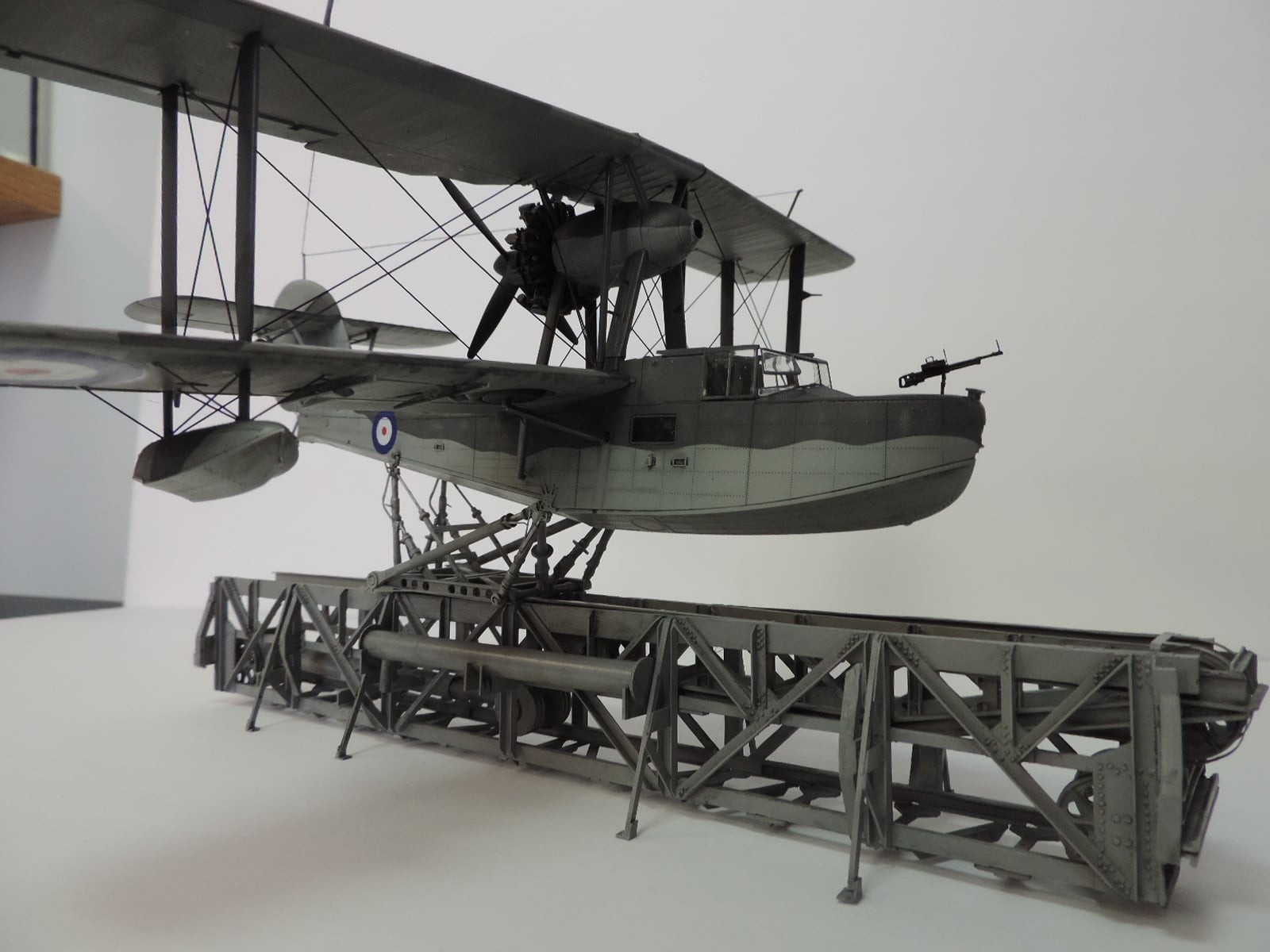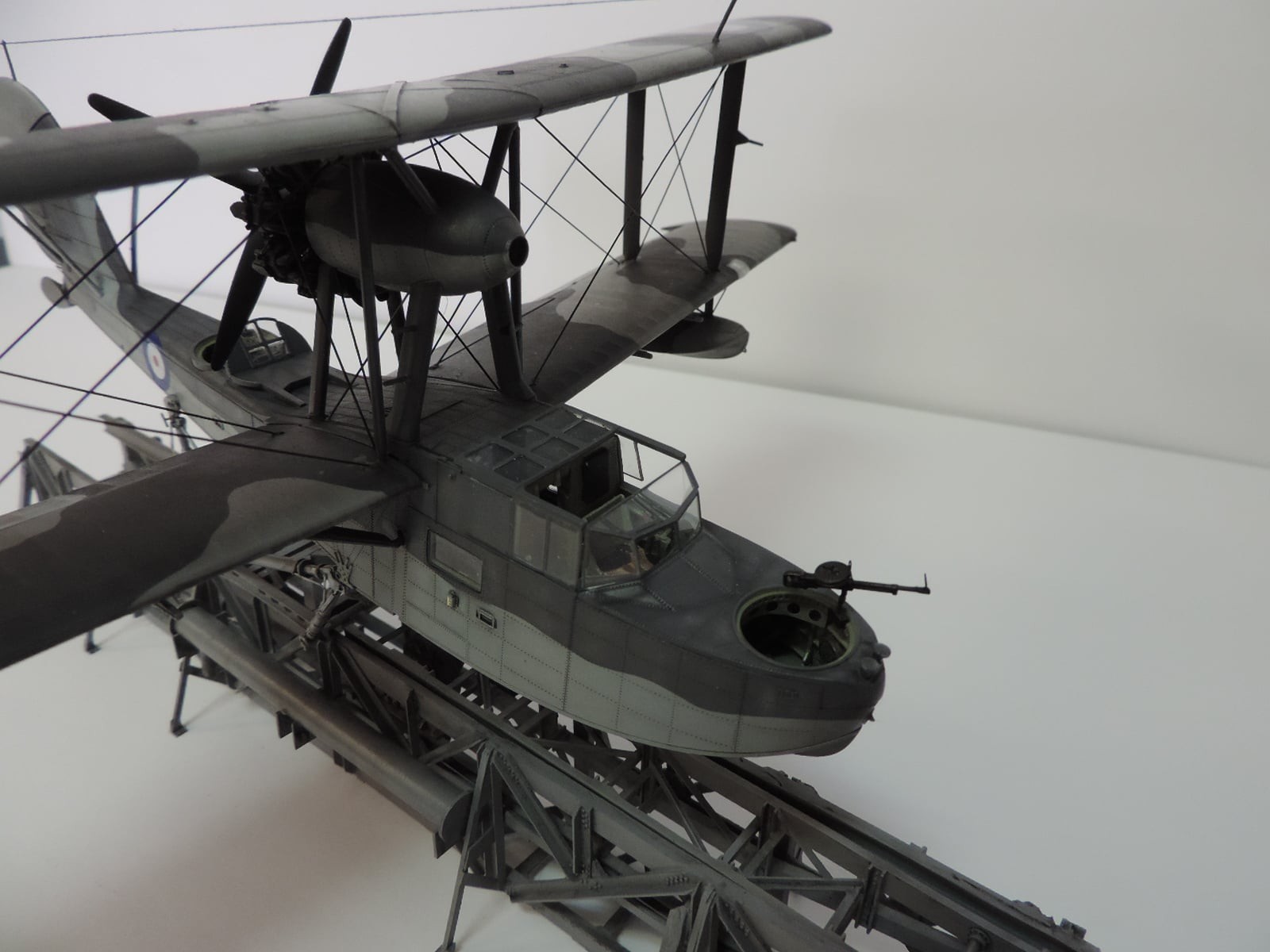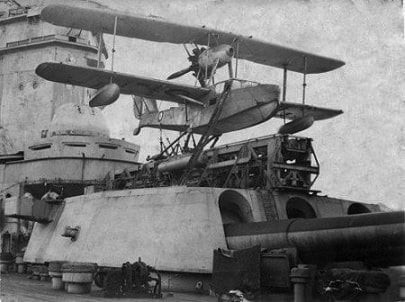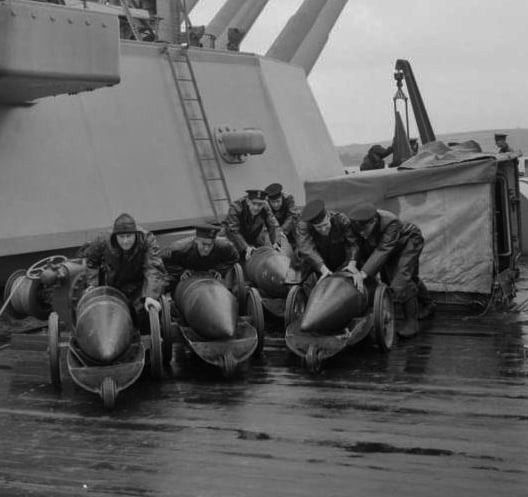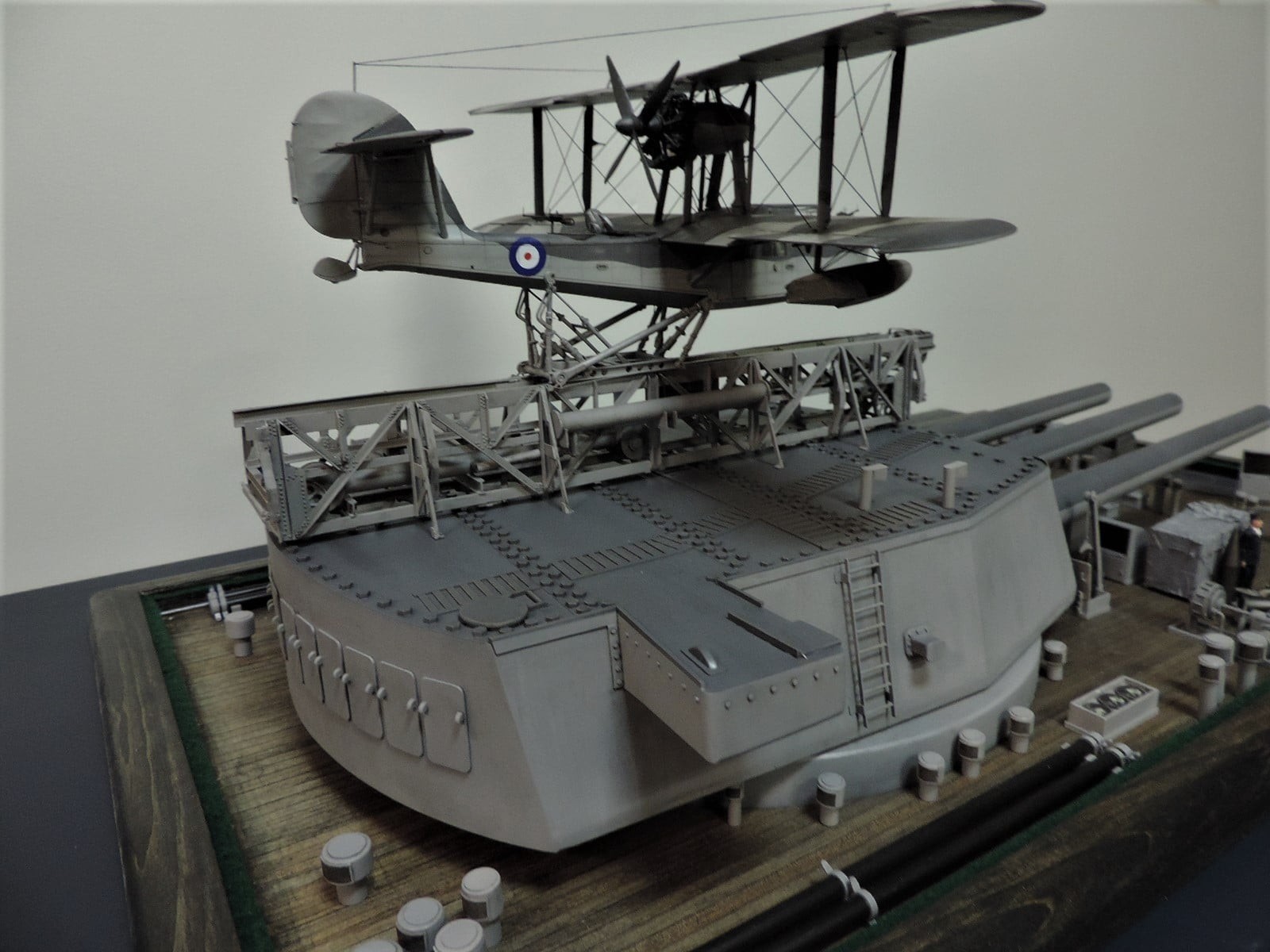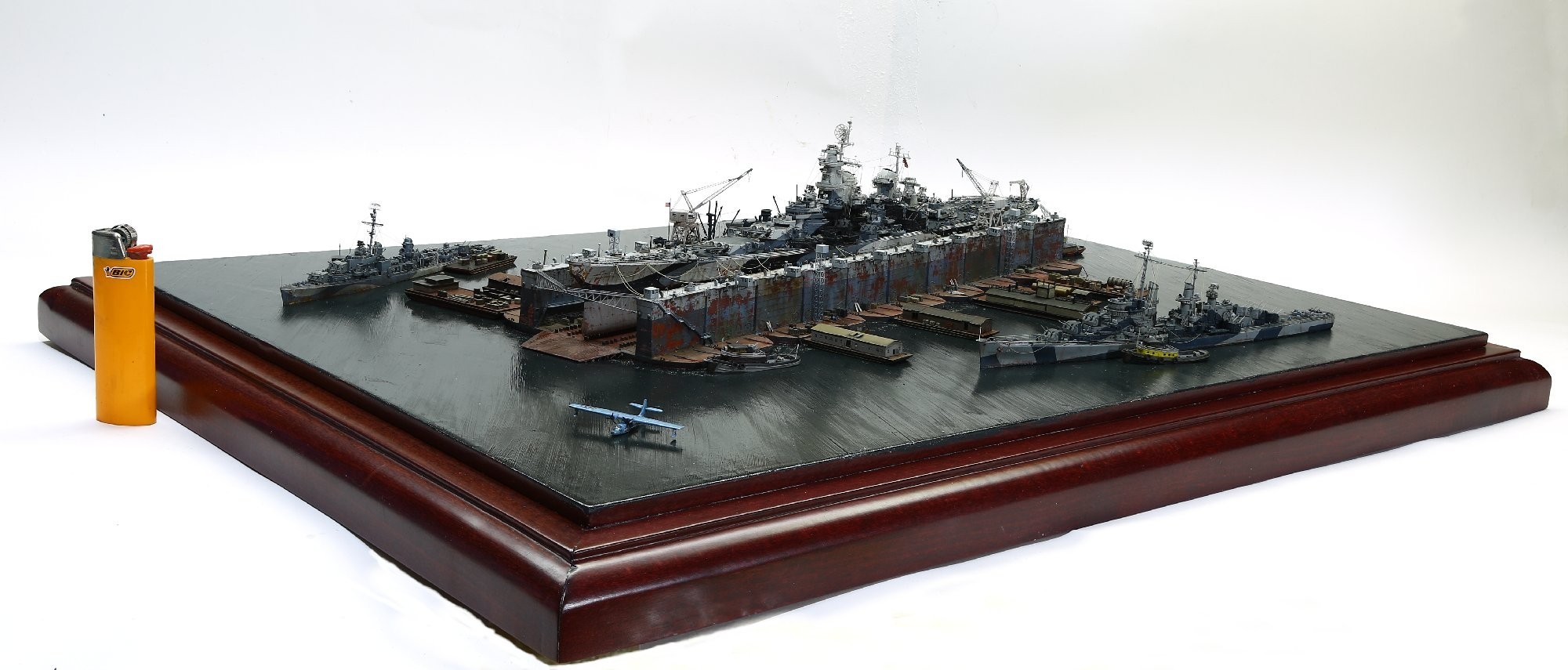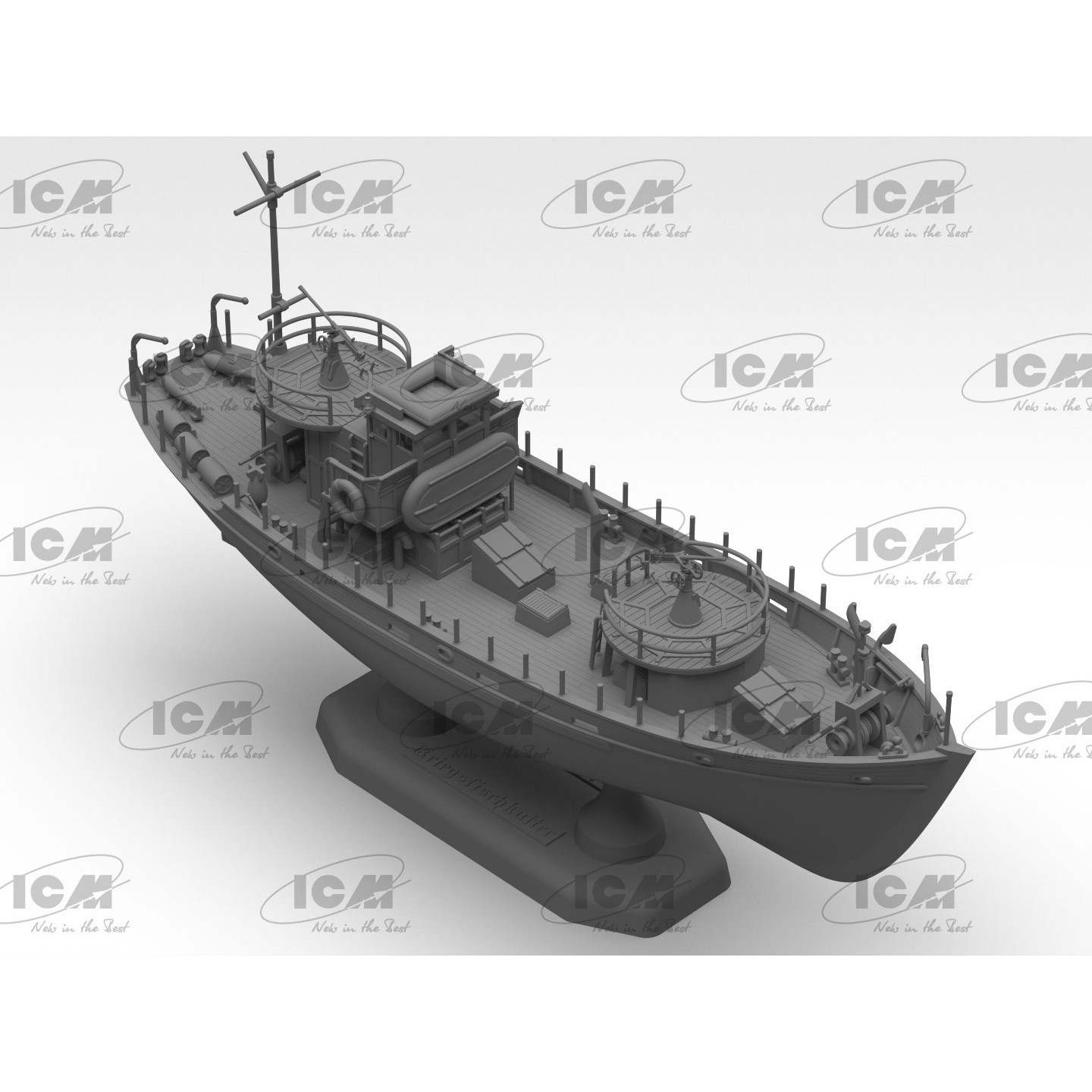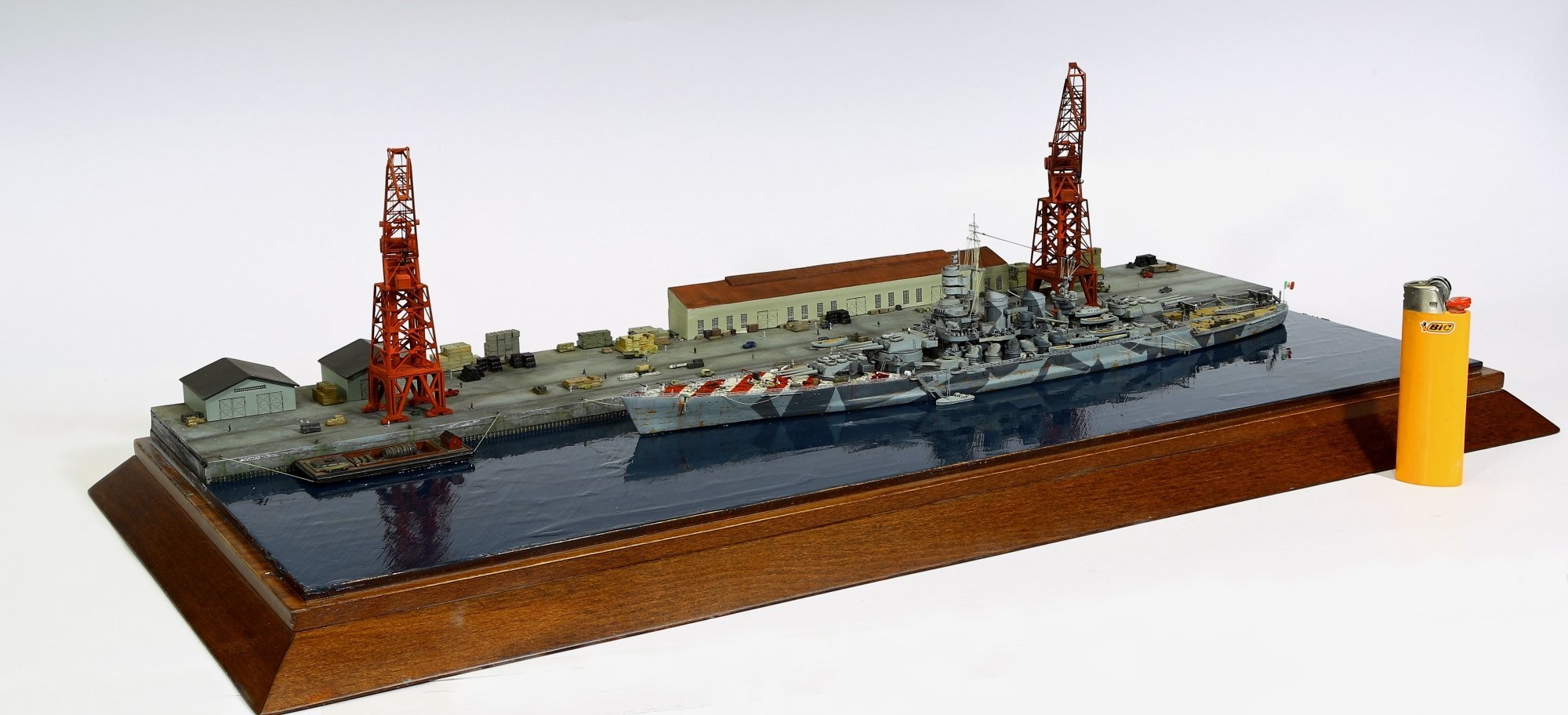A stunning build of one of HMS Rodney's Turret, and deck section with Turret and Catapult with the Deck and Turret and furnishings all of these are scratch built with resin kit of the Catapult and plastic kit of the Supermarine Walrus all built by modeller Jerry George please note even a photo of the a Walrus on a catapult and another of the the ships armourers pushing shells to the turret
I have history with the RNAS and the Supermarine Walrus as my grandfather flew a Supermarine Walrus for short period doing search and rescue before flying a Hawker Hurricane during the battle of Britain.
The Supermarine Walrus was developed from the 1920s Seagull in response to a Royal Australian Air Force request for a catapult launched amphibian aircraft capable of being launched from cruisers. Designed by R J Mitchell, it first flew on 21st June 1933. A production order by the Australian government of 24 aircraft, delivered in 1935 as the Seagull V, prompted evaluation by the Royal Navy’s No 72 Catapult Flight which, in turn, led to a contract for 12 aircraft. After further trials, an additional 204 machines were ordered and the aircraft entered service with the Fleet Air Arm in 1936. By 1939 they were serving aboard Royal Navy battleships and cruisers in both home waters, the Mediterranean and the Far East, their principle roles being the search for enemy shipping, gunnery spotting, anti-submarine and convoy protection duties. Walruses are credited with sinking or damaging at least five enemy submarines.
Powered by a Bristol Pegasus VI radial engine mounted from the centre section of the upper wing, the Walrus was stressed to a level consistent with catapult launch and, despite looking somewhat ungainly, was capable of a full range of aerobatic manoeuvres. Armament usually comprised a single Vickers K machine gun in each of the front and rear fuselage positions, whilst 760 lbs of bombs/depth charges could be mounted below the wings.
The role for which the Walrus, affectionately known as the “Shagbat” or “Steam Pigeon”, will best be remembered was that of RAF air/sea rescue. Responding in all weathers, day or night, the aircraft would land on the sea, often in enemy waters and minefields, to pick up ‘downed’ aircrew. Indeed, she was a welcome sight for over 7,000 allied airmen rescued after being forced to ditch. The aircraft served with a total of fourteen RAF squadrons in the United Kingdom and Middle East and, apart from RAF, Royal Navy and RAAF usage, a small number were operated by the armed forces of eight other countries.
A total of 746 aircraft were built with the final machine leaving the production line in January 1944. A surviving Walrus is on display at the RAAF Museum and a Seagull V at the RAF Museum, Hendon. Other exhibits can be found at the FAA Museum, Yeoviton and Solent Sky, Southampton.
